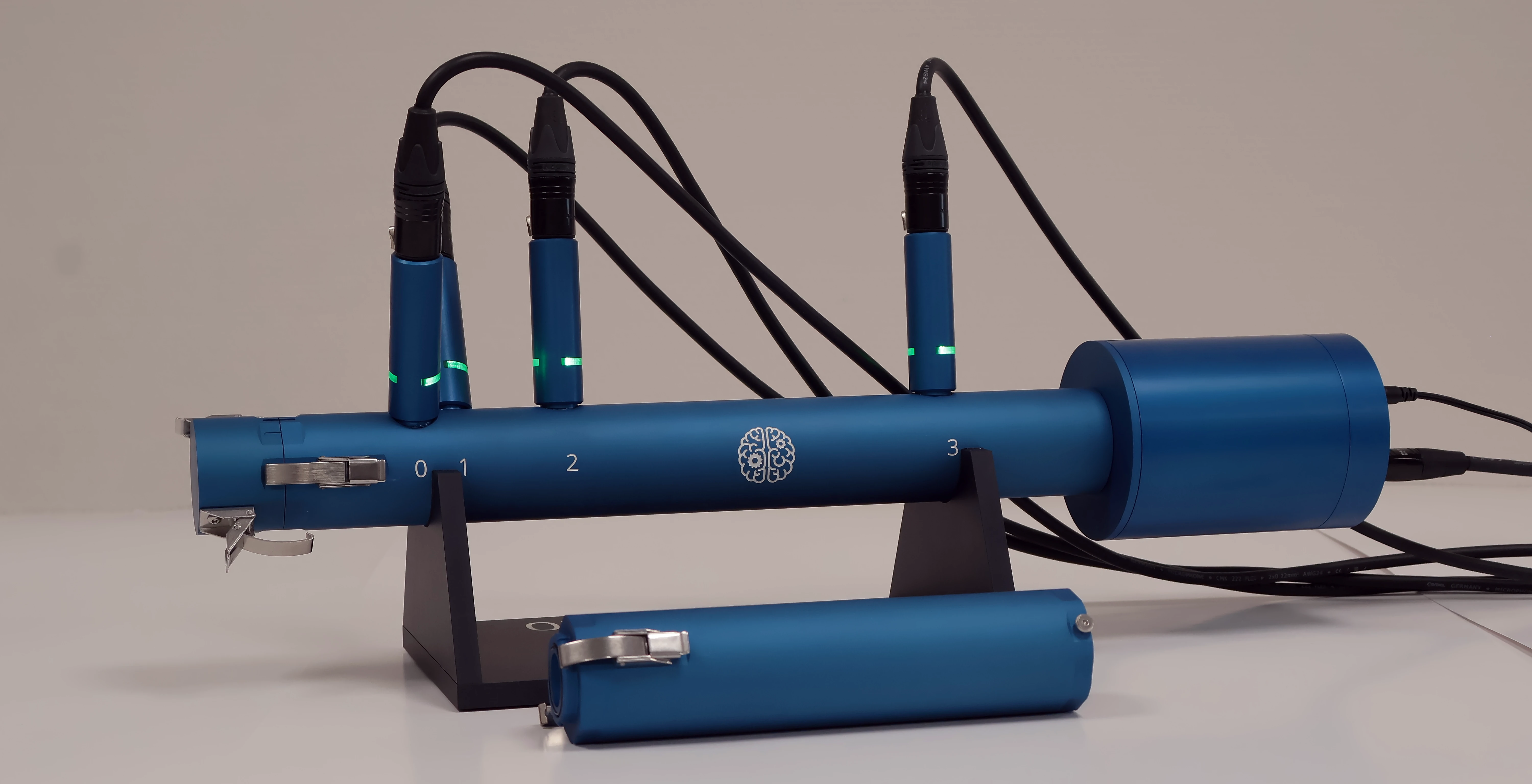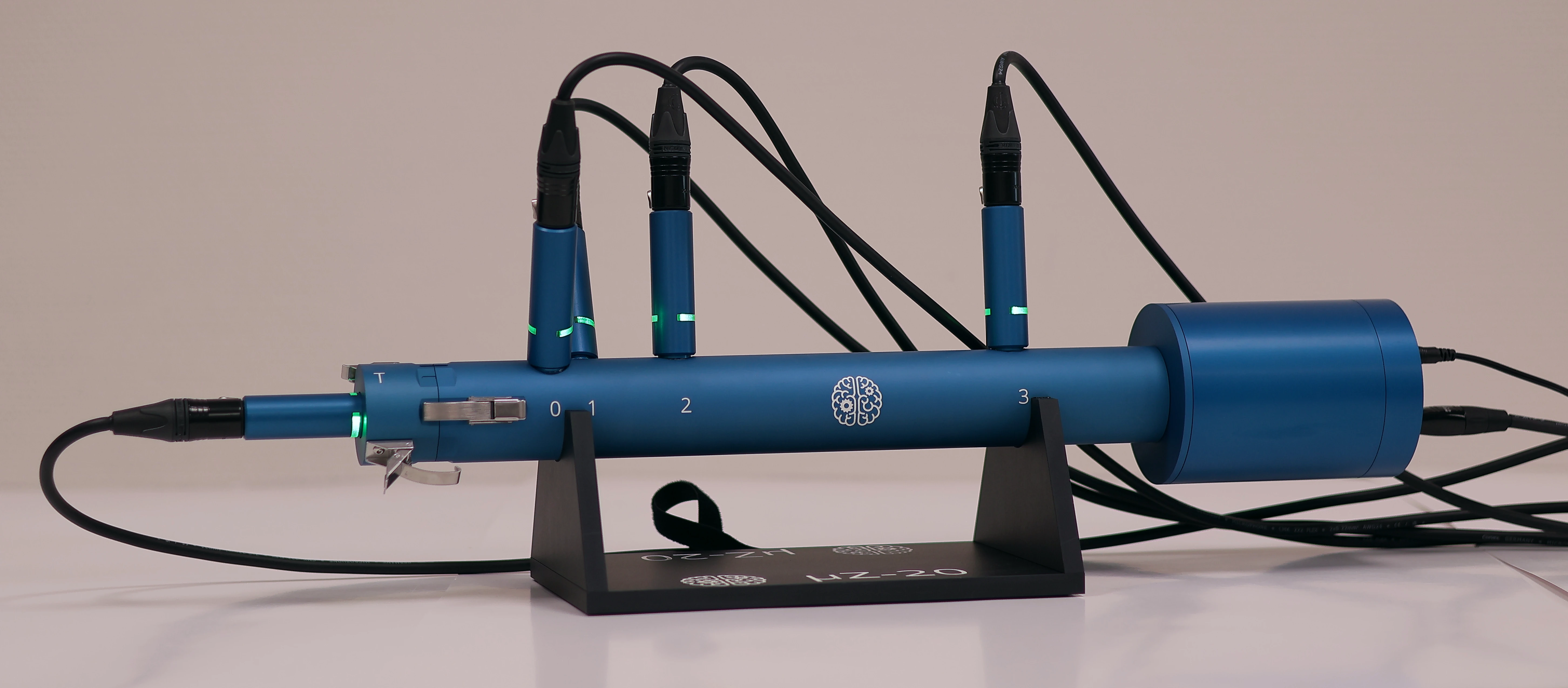Measurement configurations
µZ can be used in two different configurations:
4 microphone mode
In this configuration only the 4 MEMS microphones that come pre-assembled along the length of the main tube are used.
note
4 microphone mode is the default method for all measurements that do not involve series impedance.

5 microphone mode
In this configuration a 5th MEMS microphone is mounted in a cavity behind the sample. This tip microphone is used to measure the sound that passes through the sample.

Each configuration has its benefits and drawbacks. The preferred configuration therefore depends on the characteristics of the samples under test. See the Selection guidelines for help on how to pick the most suitable configuration for your application.